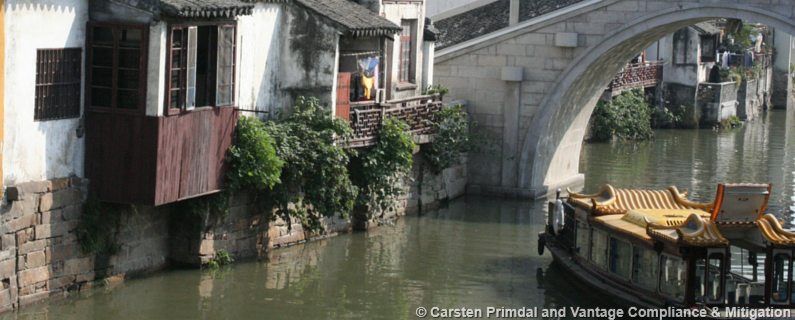Part 1: Two-Child Policy May Open New Economic Doors in China – Part 1
Oversight of the roll-out of China’s new two-child policy will be managed by the provinces, not the centralized national government. This decision follows long-standing policy within the country, where administration and enforcement of the previous “one-child” law have been maintained within the local jurisdictions.
Regional Variation is National Standard:
In the early 1980’s, the nation struggled to accept the limitation of one child per family in a country where multiple children were expected to contribute to family success. In urban areas, a single child was more acceptable because both parents had the opportunity to secure well-paying employment. In rural areas, however, families looked to numerous children to provide extra field labour, and to support the parents as they aged. In response, the national government recognized the diversity of the demographics necessities across the country and determined that birth control measures would be made in conformance with local conditions. Approval of the locally adopted methodology would be given by the provincial Standing Committee of the People’s Congress.
In the decades that followed, limited study was done to evaluate how each region within the country was enforcing the rule. Many exceptions were developed to permit a second (and sometimes third) birth, including (but not limited to) having a handicapped first-born, being a rural couple, and even when one member of the couple is an only child from a revolutionary martyr’s family. Each of China’s 31 provinces enforces the one-child policy, but with its own selection of exceptions.
Provincially Regulated Two-Child Rule vs. Nationally Regulated Employment Law:
For international corporations that do business in China, the challenge presented by the incoming two-child policy is to understand how the provincial governments where their factories are located will implement the new rule. China has a fairly well-defined maternity law structure, but it, too, has been left to the provinces to implement and oversee. For the past 40 years, employers have had to manage only one pregnancy per female employee, which reduced their costs and permitted reasonably predictable contracting terms. With the new rule coming in and considering the variations of exceptions currently allowed, off-shore contractors should be familiar with national maternity leave policies in general.
National Maternity Leave Requirements:
Each woman is allowed paid leave for the following pregnancy related events:
– Prenatal checkups after the 12th week;
– A total of 98 days of maternity leave, beginning (at the woman’s preference) 15 days before the due date. This period includes weekends and holidays;
– An additional 15 extra days are allotted women who have multiple births;
– An additional 15 to 30 days (counted by weekdays only) are also allotted women who have a “late birth” and become mothers after the age of 24 years;
– Abortions and miscarriages that happen at less than 16 weeks receive paid leave of no less than 15 days; mothers whose pregnancies terminate after 16 weeks are allotted at least six weeks paid leave.
Provincial Administration of Employee Rights Varies Widely: Not only do the maternity leave practices vary from province to province, so do other aspects of the family planning policy. Both husbands and wives can take paid leave to access “contraceptive medical procedures”. The costs for those events are often borne by local social insurance, but the length of leave allowed does differ from region to region.
For smaller companies, the extra maternity time for second-time mothers may not pose a significant challenge to existing contracts and obligations. However, if there are multiple factories involved across multiple provinces, there may be much more complex human resources issues at hand that will require additional attention.
China’s industrial sector has grown exponentially since the 1980 implementation of the one-child policy. “Soft” relaxation of the rule in rural areas has allowed a varied patchwork of exceptions that impact the labour force with each area. The roll-out of the two-child rule will undoubtedly cause consternation and concern as multinational enterprises work to achieve both contract and administrative compliance. To discuss how the factories with which your enterprise might implement maternity rules affected by the new two-child policy, call me today.
You may also like to read some of my other blogs. They can be found here:
Two-Child Policy May Open New Economic Doors in China – Part 1
“Red Flag”: Reducing Risks in your China Supply Chain
Flexiblity of Chinese Import Suppliers Will Weather Changes in Global Manufacturing Sector
Communication and Relationships Smooth the Process of Importing From China
Protect Your Manufacturing Outcomes By Avoiding Product Delays and Failures
Reputable Chinese Suppliers Maintain China’s Industrial Reputation
China’s Economic Overhaul Will Improve Global Supply Chains
Manufacturing Compromises Can Ruin Your Brand
Tenacity and Communications Reduce Risk of Chinese Child Labour Law Violations
Safety Study Identifies Chinese Supply Factory Risks
China Manufacturing Industry Challenges Trigger Inspections, Consequences
Risk Mitigation Can Prevent Chinese Supply Chain Disruption
Tips and Traps of Contracting in China
Keeping Your Supply Chain Green: Avoiding the Environmental Polluters when sourcing in China
Ensure Timely Contract Compliance with a Chinese Supply Chain Expert
Two Key Questions To Answer Before Onboarding Your Chinese Manufacturing Supplier
Off-Shore Manufacturer’s Certificates Require Credibility
Factory Planning Principles Improve Supply Chain Quality
Mitigating Risk of Quality Fade in Overseas Manufacturing Facilities
How to Assure your “Green” Supply Chain in China
ChAFTA Opens Doors for increase in China-Australia Business relations
China Verification for Your Manufacturing Supplier Needs
Australian Industry Agreements Encourage More Chinese Factory Verifications
China Factory Verification: Check Before You Buy
Frozen berry recall highlights potential supply chain risks in offshore production



